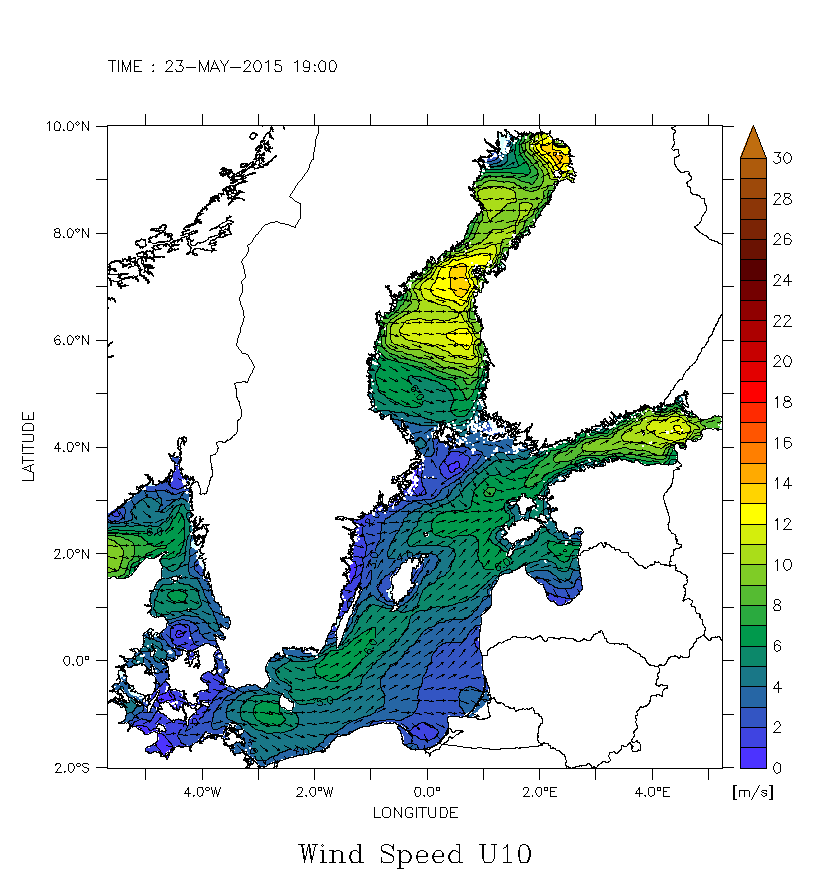About us
PROZA – Operational decision-making based on atmospheric conditions
The project PROZA has been partially funded by the European Union under the Innovative Economy Programme. Project has been rised in the answer for real needs of economy units. More than 10 years of ICM’s works in the field of simulations in physics oh the atmosphere and numerical weather prediction create the basis for the project.
The innovative shape of the project comes from its interdisciplinary character. Due to interconnection of different fields of knowledge and appropriate research methods the consortium reach the possibility of leading reaction to weather changes, and, as a consequence – decrease negative effects of some weather events. Numerical weather prediction methods consists the kernel of the project. Increase the precision of the forecasts, due to the new technical tools (meteorological radar) and improvements in numerical modelling methods gives measurable effects in fields of human activity covered by the project. The general objective of the project is decrease of a risk of decision-making dependending on changing atmospheric conditions.
Project consists of four tasks, which are realised by individual research groups. The main tasks of project are: 1. Development of operational weather prediction system 2. Expert system for energy production 3. Application of numeric weather forecasts results in forestry and horticulture 4. Application of ocean and atmosphere modelling in marine transport and engineering IOUG, as a partner of the Consortium, carrying out R&D project PROZA within the framework of Task 4. The Institutes objective is to develop a coupled wave-current model for the Baltic Sea and the Gulf of Gdańsk working in operational mode in IOUG. The coupled wave-current nested models together with systematic routine measurements of the sea and atmosphere parameters will compose a basis of a hydrometeorological forecasting and warning system which is being developed within PROZA.
In the current version of the operating model meteorological data from Interdisciplinary Centre for Mathematical and Computational Modelling (ICM) is being used. Hydrodynamic conditions are modelled on a dedicated serverusing the following models developed by and operating in IOUG – nested WAM models (Wave Model) in a regional scale (Baltic and Southern Baltic), and SWAN (Simulating Waves Nearshore) – in a local scale (the Bay of Gdansk and the Bay of Pomerania, direct surroundings of port), and 3-dimensional hydrodynamic POM model (Princeton Ocean Model).
We envisage that one of the results of the project will be sea conditions for the maritime transport and marine engineering, generated by the coupled wave-current model. IOUG aimed to develop a forecast system for monitoring and forecasting the hydrodynamic conditions in the open sea and coastal zone of the Baltic Sea. This kind of service, together with supplemental meteorological data, is a base for a hydrometeorological forecast service, which is intended to support for rational scheduling of voyages of transport ships, ferries, fishing boats; and protection for the marine operational activities (such as search and rescue actions).
Project goals
Hydrometeorological protection of ports
Accurate information about meteorological conditions, sea currents and waves, is very important for the management and operation of ports. As an example, information about waves and currents in the approach fairways of the ports is essential for marine pilot who manoeuvres ships into the port. Maritime offices should have systems allowing for operational decision-making based on:
- Current data – wind speed, rain, air temperature and water temperature, sea levels, currents and wave height
- Current weather observation of Baltic Sea – temperature, pressure and wind speed in a regional and local scale (Southern Baltic)
- Baltic Sea weather forecast – presented like the current weather observation
Forecast of sea conditions
The objective of the project is also monitoring and forecasting the hydrodynamic conditions in the open sea and coastal zone of the Baltic Sea. This kind of service, together with supplemental meteorological data, is a base for a hydrometeorological forecast service, which is intended to support for rational scheduling of voyages of transport ships, ferries, fishing boats; and protection for the marine operational activities (such as search and rescue actions; forecasting the spillage impacts); and also protection for the offshore engineering operations, both in the open sea and the coastal zone. Hydrometeorological forecast service has an impact in planning and safety of recreational activities. Including a broad spectrum of factors and modeled parameters, the system provides forecast to a wide range of users for different purposes. Potential service users are professional units dealing with marine operations, as well as individual customers for recreational purposes for example.



















